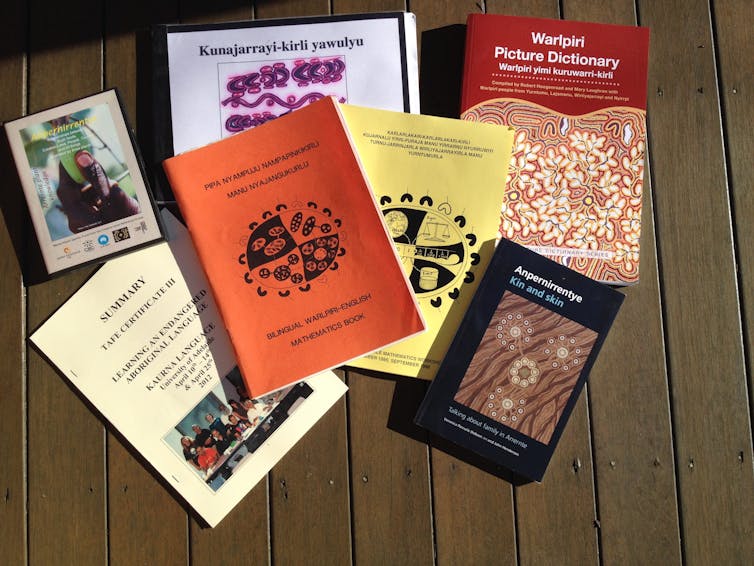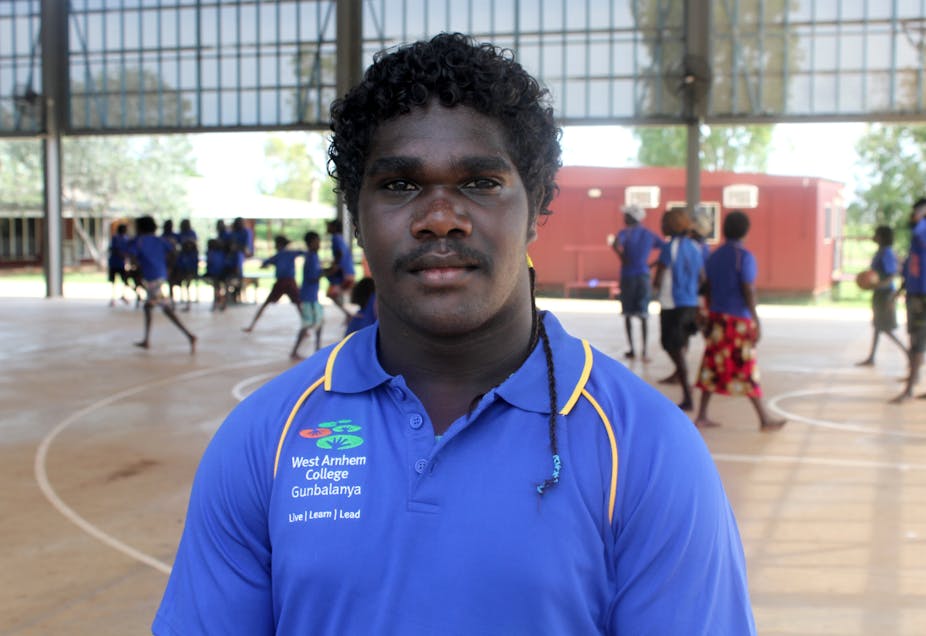The question of what language(s) to teach Indigenous students, what languages to teach them in, and how to go about it has been generating a little political heat (but not quite so much light) of late.
On ABC’s Q&A earlier this month, Yalmay Yunupingu – the widow of Yothu Yindi front man Mandawuy Yunupingu – asked a pointed question about how the teaching of Indigenous languages will be funded given that Article 14 of the United Nation’s Declaration of the Rights of Indigenous People states that Indigenous children have the right to education in their own language. And a recent piece in The Conversation by Stewart Riddle sparked controversy after he said it could be argued that the emphasis placed on English literacy was no better than discredited historical attempts to make Aboriginal kids more “white”.
In fact, there’s a broad consensus that Indigenous students need to be taught English to fully participate in society. Most people also agree Indigenous languages need to be preserved. But there’s a great deal of confusion about how to go about this. This stems from confusion about how to address the language needs of children.
How and what do we teach Indigenous children?
Let’s begin with children who come to an Australian school speaking an Indigenous language or Cantonese or Arabic or a language of Somalia or… These children need to learn English as a subject – they need to learn English grammar, pronunciation, and to expand their English vocabulary. Otherwise they’re cut off from the goods and services of mainstream society. Everyone agrees on this: Indigenous parents, immigrant parents and teachers alike. Where they disagree is how this should be done.
There’s the el cheapo sink-or-swim approach – we chuck the kids into an English-only classroom where they don’t understand a word of what is being said, and then we expect them to learn to speak English by immersion. This may work in classes where almost all the classmates speak English and the child’s parents can provide support at home. But it doesn’t work in classrooms where the classmates don’t speak English, and where parents can’t read or write English. If a child can’t understand what a teacher is saying about arithmetic, then they won’t learn the basics of arithmetic. Children become bored with not understanding what is happening in the classroom, and lose confidence in their ability to join in mainstream society.
There’s a better approach – where children are taught in English, but where from the start teachers do teach them English as a subject in a systematic way, building up their confidence in speaking, reading and writing English. This will result in delays in understanding subjects such as arithmetic and science, until children have mastered enough English to understand what the teacher is saying. But at least it gives them a chance to learn English well.
In both these approaches, the home language is sometimes taught as a subject for perhaps 30 minutes a week. This doesn’t help children understand what is happening in the classroom, but it may give them a sense that the language is valued. However, to do this properly, a staged curriculum is needed, where children build on what they have learned, and enhance their knowledge. There aren’t the materials to do this in many communities, and so children may endure a lot of repetition of the same low-level material on plants, animals and artefacts. This may lead them to think that their home language is a restricted language, not something that they can use on Facebook, or something to use to talk about rockets, asteroids etc.
Then there’s the best practice approach – where the home language is used as the medium of instruction in the classroom at the start. Children begin school with teachers who can explain what’s happening in the classroom in their home language. These teachers can teach children English in a systematic way, building up their confidence in speaking, reading and writing English grammatically.
They can explain the fascinating and complicated ideas of maths and science in a language that children can understand, until they have mastered enough English for a switch of language of instruction to English. This is ideal. For it to work, governments need to invest in training fluent speakers of the languages as teachers, in helping them learn how to teach children to speak, read, write and understand English, and in developing elementary curricula and materials in the languages (see the Living archive of Aboriginal languages for examples). The payoff of a good mother-tongue-medium instruction program is excellent – children who can talk about a range of ideas in two languages, and who grow up knowing that both their languages are valued.
Indigenous languages are shrinking
As the children grow older, there’s the question of enriching their home language. As English speakers, most Australians are used to developing a mastery of the language in school, through using it to talk about maths, the economy, genetics, and so on. They learn new ideas and new words to express these ideas concisely.

Classes on English literature, poetry, plays, and films are other ways of increasing our knowledge of English. A few second language speakers of English may be lucky enough to have the opportunity to enrich their home languages in a similar fashion – German or French or Mandarin speaking children may be able to go to bilingual schools in Australia where they can learn to talk about ideas in a sophisticated way. They can learn at school about the histories and societies linked to their home languages. They can read Goethe, Victor Hugo, Mo Yan.
Indigenous children have no such luck. The domains in which they can use their home languages are shrinking, there is little or no material in their languages for them to study at school, and compulsory schooling in English means they have less time to speak their home languages anyway. Very few learn at school about the great works of verbal art of their communities. All too often, teaching about Indigenous arts at school is reduced to “didgeridoos, dots and damper”. Teaching at a higher level requires teachers who know the Indigenous language and understand the language of songs and storytelling, or who can collaborate effectively in team-teaching with senior Indigenous singers, performers and story-tellers.
English-only schooling as practised in most Australian Indigenous communities is destructive - it reduces children’s ability to learn English, to learn other subjects, to learn about the verbal arts of their own societies. It reduces opportunities to enrich their first languages through discussing new ideas in those languages. In the long-term, it reduces the chances that the next generation of Indigenous children will be bilingual in Indigenous languages and English. And in that way English-only schooling reduces the chances that Indigenous languages will survive much longer.

